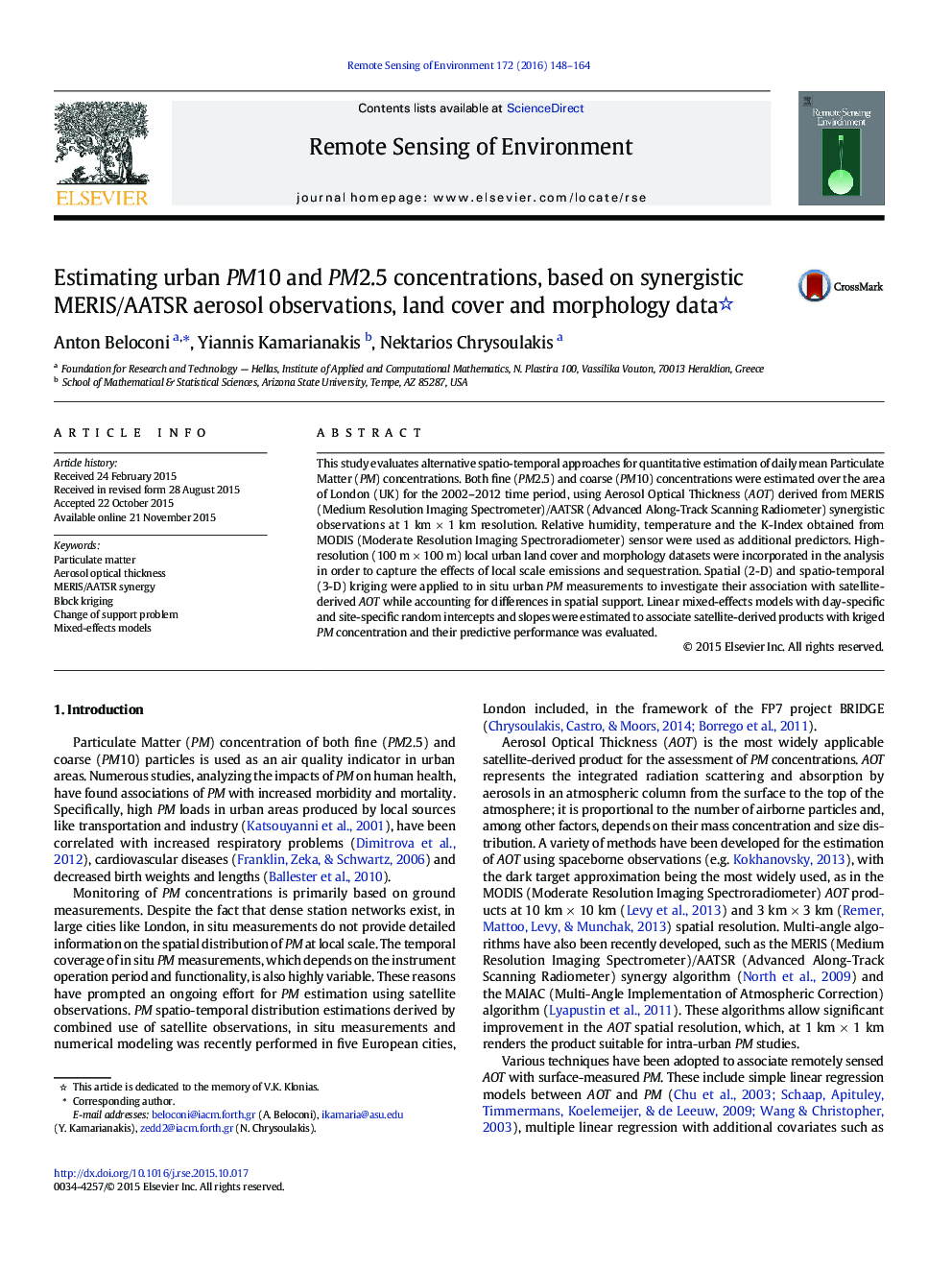| Article ID | Journal | Published Year | Pages | File Type |
|---|---|---|---|---|
| 6345725 | Remote Sensing of Environment | 2016 | 17 Pages |
Abstract
This study evaluates alternative spatio-temporal approaches for quantitative estimation of daily mean Particulate Matter (PM) concentrations. Both fine (PM2.5) and coarse (PM10) concentrations were estimated over the area of London (UK) for the 2002-2012 time period, using Aerosol Optical Thickness (AOT) derived from MERIS (Medium Resolution Imaging Spectrometer)/AATSR (Advanced Along-Track Scanning Radiometer) synergistic observations at 1 km Ã 1 km resolution. Relative humidity, temperature and the K-Index obtained from MODIS (Moderate Resolution Imaging Spectroradiometer) sensor were used as additional predictors. High-resolution (100 m Ã 100 m) local urban land cover and morphology datasets were incorporated in the analysis in order to capture the effects of local scale emissions and sequestration. Spatial (2-D) and spatio-temporal (3-D) kriging were applied to in situ urban PM measurements to investigate their association with satellite-derived AOT while accounting for differences in spatial support. Linear mixed-effects models with day-specific and site-specific random intercepts and slopes were estimated to associate satellite-derived products with kriged PM concentration and their predictive performance was evaluated.
Related Topics
Physical Sciences and Engineering
Earth and Planetary Sciences
Computers in Earth Sciences
Authors
Anton Beloconi, Yiannis Kamarianakis, Nektarios Chrysoulakis,
